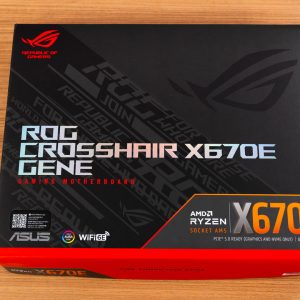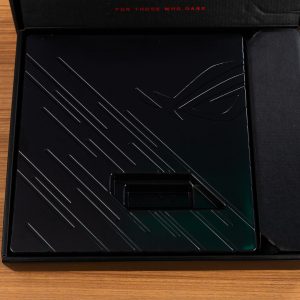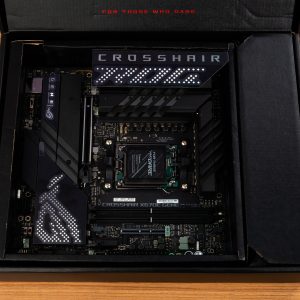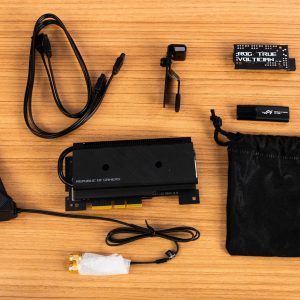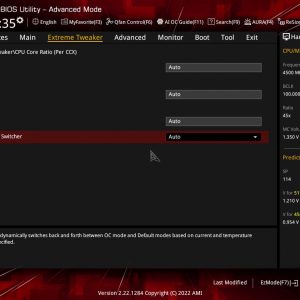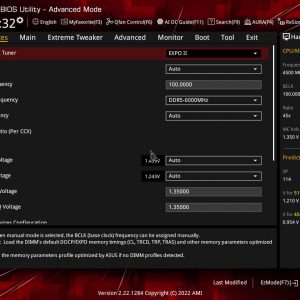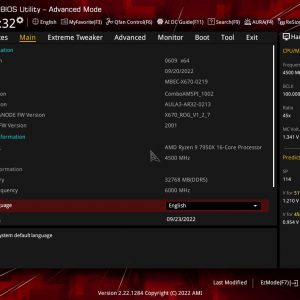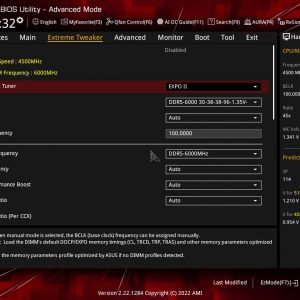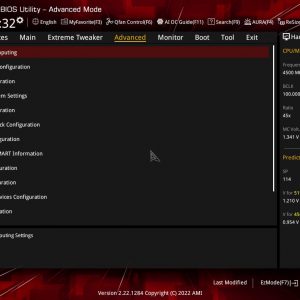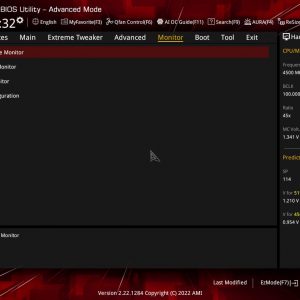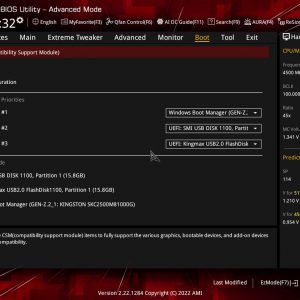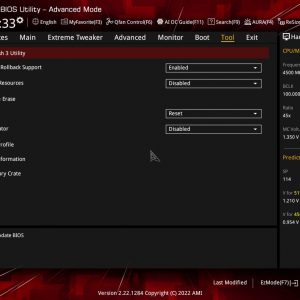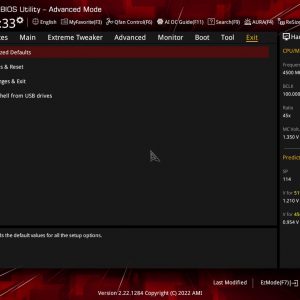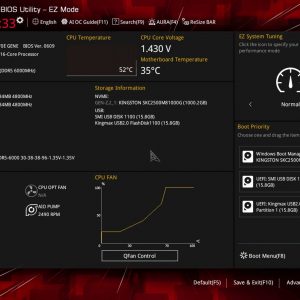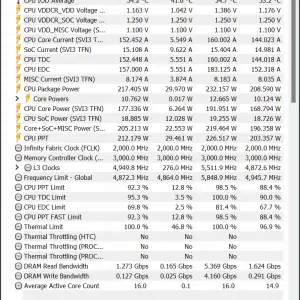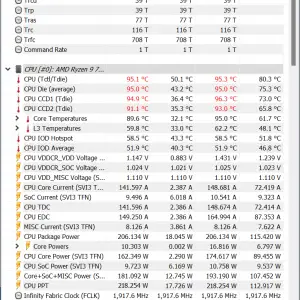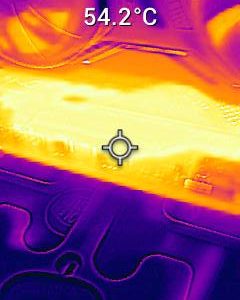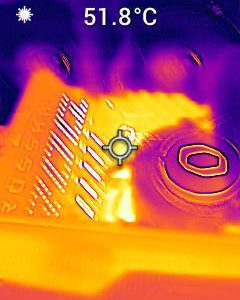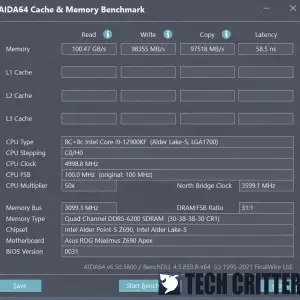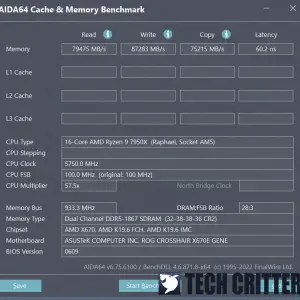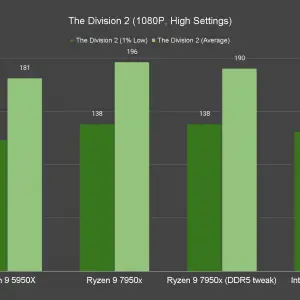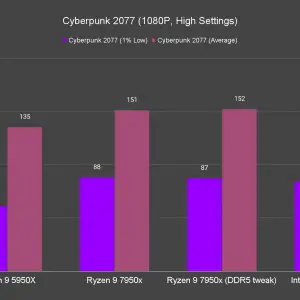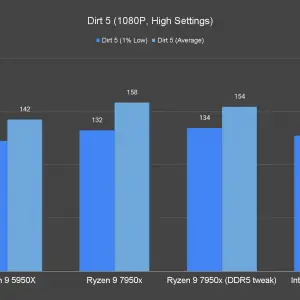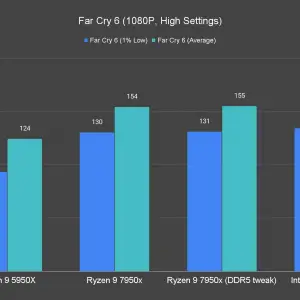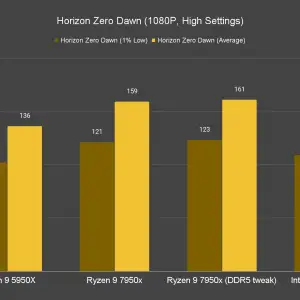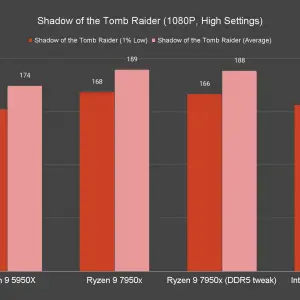The AMD Ryzen 7000 series desktop CPUs are coming and since you’ll be needing a brand new AM5 motherboard if you’re going for the upgrade, the earliest models you can get right now are the X670 and X670E chipset motherboards. We managed to get our hands on some for testing out the new Ryzen 9 7950X and one of the motherboards is my personal favorite so far – the ROG Crosshair X670E Gene.
It’s been a while since we last saw a Gene in the ASUS ROG motherboard lineup but it’s finally back. As some of the features can only be tested with new equipment or components that we have yet to get our hands on, we’re only focusing on the features that we’re able to test for now. So without any further ado, here are some of my experiences to share if you’re thinking of getting the ROG Crosshair X670E Gene this time.
Box & Accessories
While the box did come in the new ROG accent, it has a much more striking look because of the X670E chipset label. Inside the box, we’re also seeing something different this time, a fully opaque hard plastic motherboard cover that gives a totally different ROG motherboard unboxing experience – at least for me personally. Most of the accessories are inside the long box on the right but you’ll also find the user manual, useful cables, etc inside the bottom compartment.
So, the useful accessories that come with the motherboard include the WiFi antenna, USB drive with the drivers and utility for the motherboard, GPU holder, SATA cables, the ROG GEN-Z.2 add-in card, and the ROG True Voltician for voltage measurement.
The ROG Crosshair X670E Gene Overview
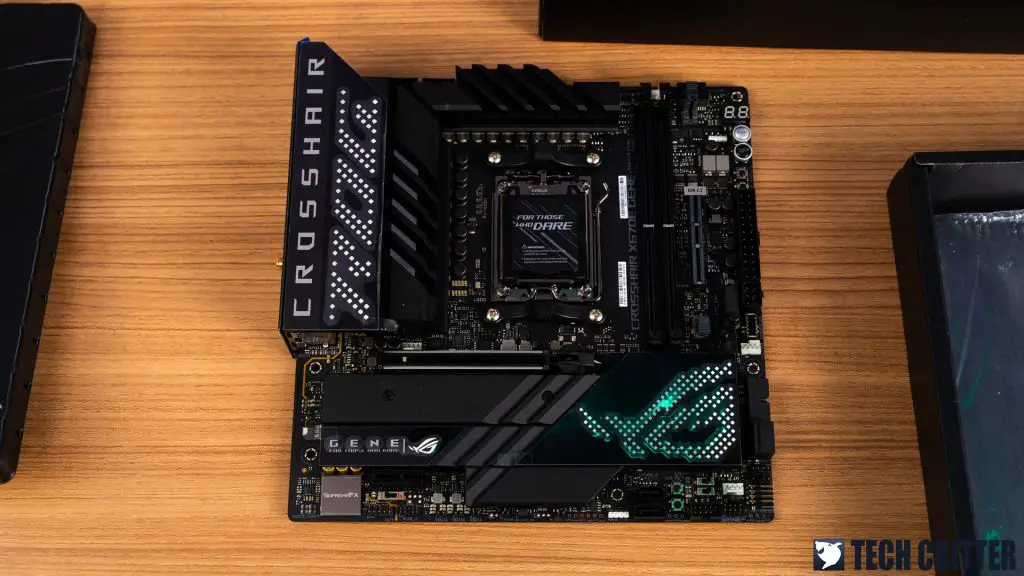
The ROG Crosshair X670E Gene comes in the mATX form factor, which the model is renowned for. Unlike what we have in the past, the latest Gene only has one x16 PCIe 5.0 slot and the remaining one is an x1 slot for an additional add-in card. The heatsink seems pretty reasonable this time and it features the same new pixelated ROG logo design on the PCH heatsink.
With AMD moving to LGA design now, all the new AM5 motherboards will come with this familiar-looking ILM for the CPU socket. Around the CPU socket, we can see the usual AMD cooler bracket which is meant to support existing AM4 coolers that uses the type of locking mechanism with the bracket. Coolers with custom brackets, however, might not be compatible this time because of this design.
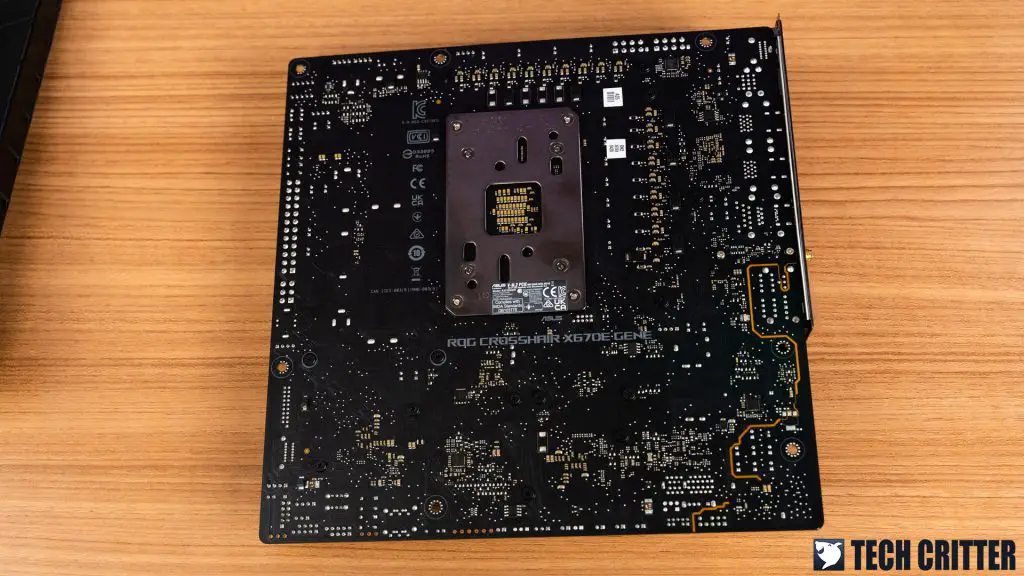
The reason for me saying that coolers with custom brackets might face compatibility issues is because the default backplate is made for both the ILM and the AMD cooler bracket. Most custom coolers we’ve seen come with backplates that are meant to replace the stock AMD bracket, and removing the stock backplate for AM5 will probably render the ILM useless.
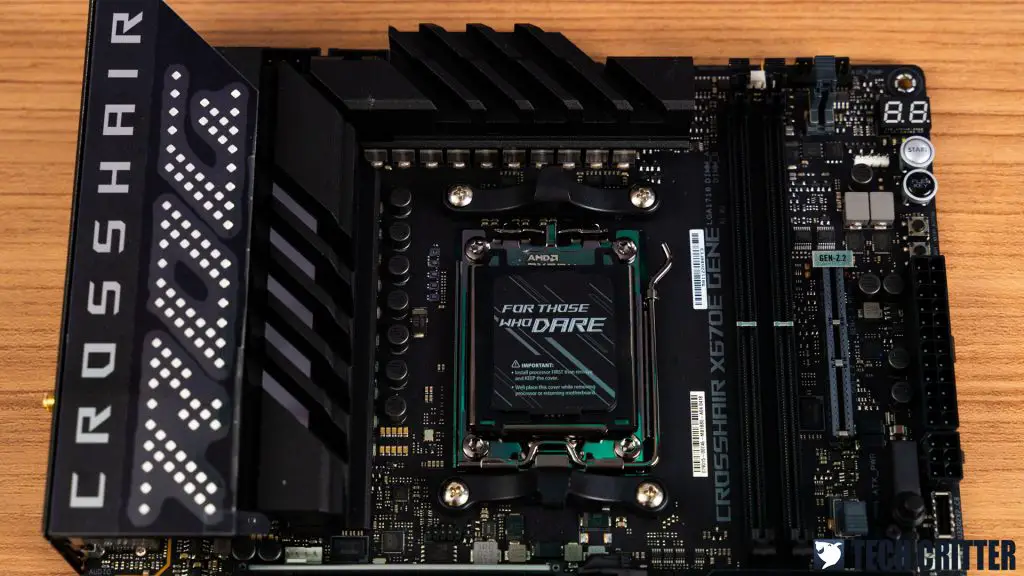
On the top right corner of the board, you’ll find the usual useful features such as the Q code debug LED, onboard power and reset buttons, ReTry and Safe Boot buttons that are especially useful for those who plan to use the board for their test bench.
The ROG Crosshair X670E Gene this time has only two DIMM slots but this design gives it a better advantage when it comes to memory overclocking. We didn’t have much time to try and achieve any remarkable high-frequency results due to limited time with the board but tightening the memory timings is noticeably easier on this board and the memory training time seems to be slightly faster during our tests.
ASUS has introduced a new ROG Gen-Z.2 add-in card that replaces the DIMM.2 for M.2 SSDs, with one supporting PCIe Gen 4 speed and the other with the heatsink supporting the new PCIe Gen 5 speed.
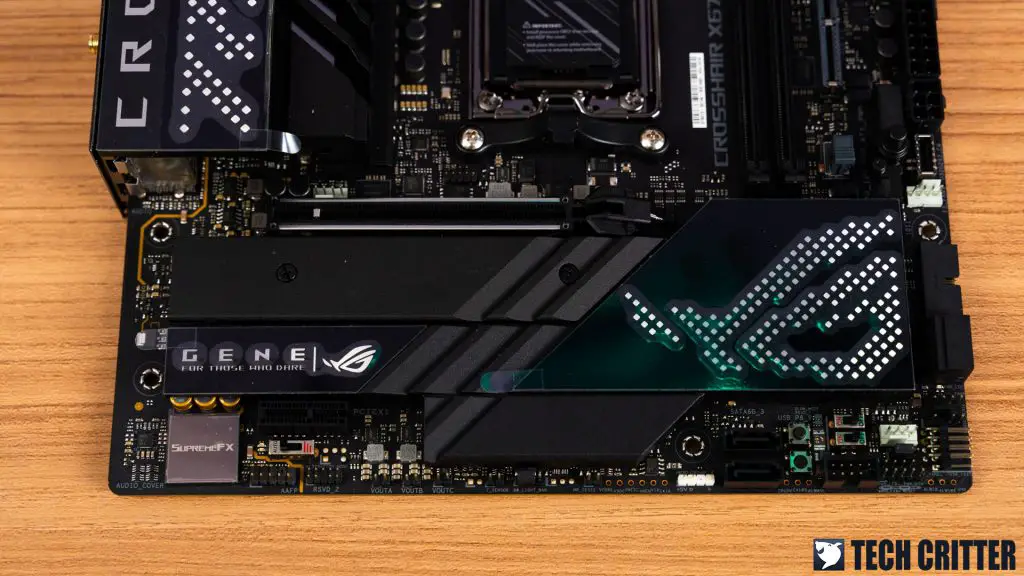
At the bottom part of the motherboard, you’ll find the single PCIe X16 slot, one PCIe X1 slot, and an extra M.2 slot as expansion options. Although there’s no tall heatsink blocking the PCIe slot latch, it’s good to see that ASUS still included the PCIe Q-Release button design on the ROG Crosshair X670E Gene for easier graphics card removal.
There are also plenty of useful buttons and switches around this area: Alteration mode switch to switch between PCIe Gen4 and Gen3 for the PCIe slot, BCLK buttons for BLCK frequency adjustment on the fly, Slow mode switch which can be really useful during memory overclocking, LN2 mode jumper if you’re going for extreme overclocking, and the Probelt measurement points and OSC sense header for voltage measurements during overclocking.
The RSVD switch and header, however, should be left untouched as it’s a feature that is only meant for ASUS-authorized technicians.
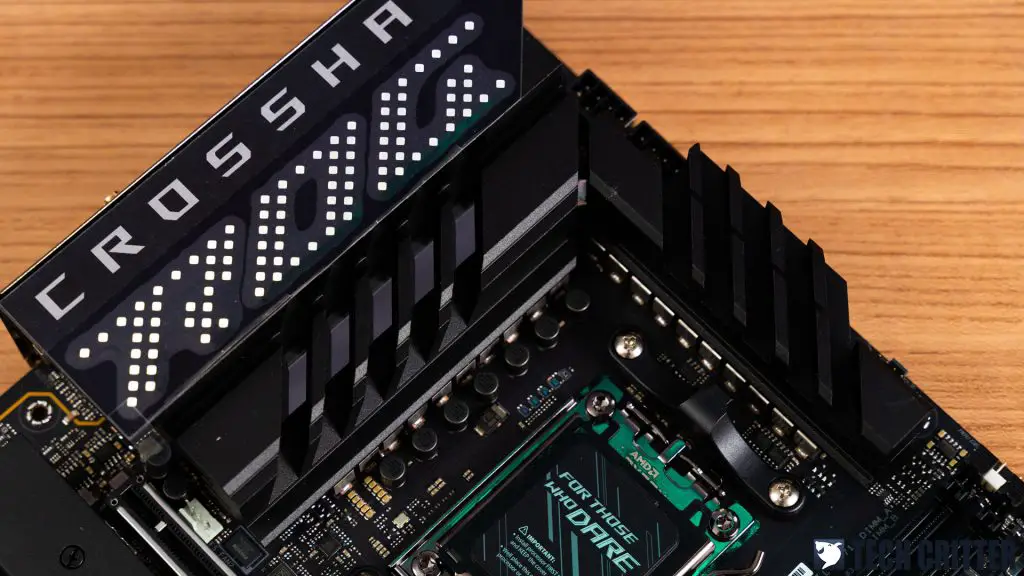
As for the power design, we didn’t get too deep into it but according to the information we’ve looked into, it’s a 16+2-phase VRM with each phase rated at 110A. This is plentiful even for the Ryzen 9 7950X and we actually able to observe higher power draw on the CPU which translates to better performance in content creation tasks with the ROG Crosshair X670E Gene.
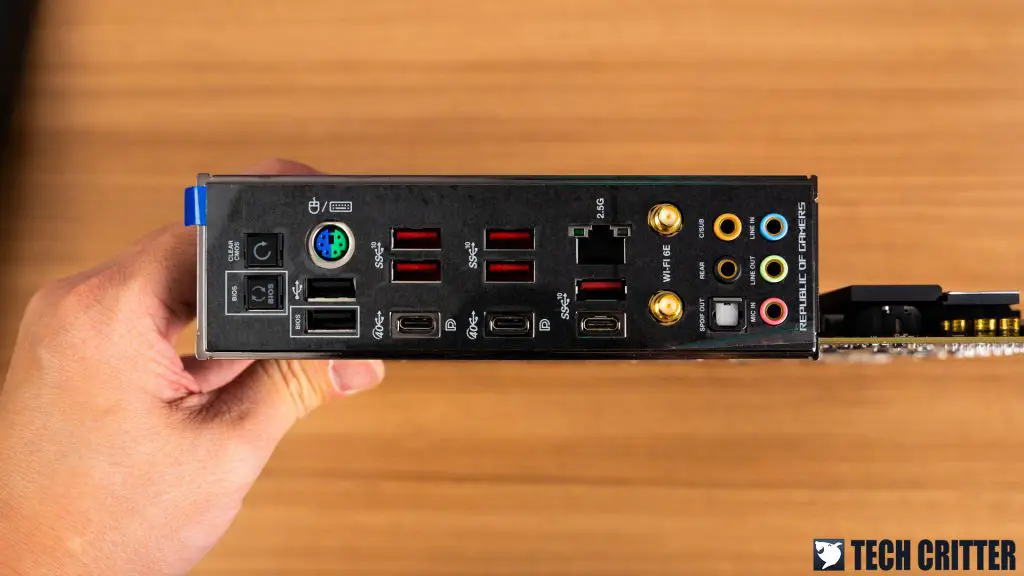
And for the rear I/O panel, you’ll get the handy Clear CMOS button and USB flashback button with the labeled USB port, plenty of USB ports with all the confusing naming thanks to the people at USB-IF but you can pretty much tell the speed for each USB port from the label, an Intel 2.5GbE LAN port, Wi-Fi 6E connector, S/PDIF and audio jacks, and a PPS/2 keyboard mouse combo port that can come in really handy during overclocking session when your USB ports decide to not work at some point.
BIOS Interface
Test System Setup
| CPU | AMD Ryzen 9 7950X |
| Motherboard | ASUS ROG Crosshair X670E Gene |
| Memory | Kingston Fury Beast RGB DDR5-6000 CL30 / G.Skill Trident Z Neo DDR5-6000 CL30 |
| Graphics Card | Radeon RX 6700 XT |
| Power Supply | Cooler Master V1200 Platinum |
| Primary Storage | Kingston KC3000 2TB |
| Secondary Storage | WD Black 6TB |
| CPU Cooler | Cooler Master MasterLiquid ML360R |
| Chassis | Streacom Open Bench Table |
| Operating System | Windows 11 64bit |
CPU Load Test and Thermals
Although the Ryzen 9 7950X is able to retain a consistently high 5.0GHz+ frequency across all cores during heavy load, the overall cooling capacity of the cooler you’re using ultimately decides how far you can go with the new Zen 4 CPUs even though the highest load temperature we can see across all other coolers are the same at 95ºC.
If you have a reasonable cooler, preferably an AIO with a 360mm radiator at least, you can get the Ryzen 9 7950X to perform exceptionally well. Though when we’re using the same cooler for other tests, the Ryzen 9 7950X can be seen performing slightly better on default with the X670E Gene and we can see a slightly higher power draw with it.
And for the thermals, we’ve captured the temperature reading during load using a thermal imaging camera and a thermocouple just out of curiosity. Although the sensor reading is similar to what we’ve recorded using the thermocouple, which is at 56ºC for the VRM and 60ºC for the chipsets, which isn’t really that hot. The temperature from the thermal imaging camera, however, seems to show that the heatsink around the area has slightly lower temperature readings. The heatsink is definitely doing its job and you’ll be able to lower the temperature more if you have some directed airflow going around that area.
Memory Overclocking?
Moving on to our not-so-much memory overclocking test, we have both the Kingston Fury Beast RGB DDR5-6000 CL36 and G.Skill Trident Z Neo DDR5-6000 CL30 tested on the X670E Gene. Both memory kits are able to achieve the 65ns memory latency as advertised by AMD using just the EXPO profile, but you can still improve it a little by tightening the memory timings for just a bit more. With CL30-36-36-30 1T and some minor adjustments on the sub-timings, you can easily achieve 60ns but if you have previously tested DDR5 on an Intel Platform, the memory bandwidth on the AM5 platform seems to be pretty low as compared to what we’ve seen on Intel.
The same behavior can be seen across all the X670E motherboards we’ve tested so far, so this is something that we’ll have to check again with AMD and see if this result is actually ‘normal’. It doesn’t seem to be affecting the gaming performance or benchmark results for now, but for the time being, I think it’s best to stick with the supposed sweet spot with DDR5-6000 and Auto:1:1 for FCLK:MCLK:UCLK as recommended by AMD until there’s more information available in the near future.
So bandwidth aside, does that kind of slight optimization makes any difference? Well, apparently yes for some games. Games that take advantage of it show not just higher average FPS but higher 1% low as well, and this is pretty much what some users missed back then when DDR5 was first made available to the consumer market on the Intel 12th Gen release. While the latency on DDR5 memory might seem high to some users at first glance, optimization can still be done on various levels and the return is totally worth the effort.
First Impression
As ASUS Malaysia has yet to announce the price for their new X670E chipset motherboards at the time this article is being written, we’ll come back to it at a later date after the official price is announced.
Despite its mATX form factor, the ROG Crosshair X670E Gene still packs a ton of features that is technically on par with or even better than an ATX form factor motherboard in many cases. While many of the features are designed for enthusiasts and overclockers, it also makes a reasonable motherboard for a gaming PC and they can come in really handy during system maintenance or troubleshooting.
Other than features that we’re unable to test due to the lack of types of equipment i.e USB4 and PCIe 5.0 that are still not widely available yet, most of the features are pretty much the same as the other new-gen ROG motherboards and you can use them with almost all of the existing components without any issue.
I don’t really have anything to complain about at this time except for the cooler compatibility issue for AM5, but that’s the issue that all AM5 motherboards are facing and it’s up to the cooler manufacturers to come up with a replacement backplate if they’re not using the default AMD bracket or backplate for their cooler.
This is not really a big issue as there are still plenty of existing coolers out there that utilize the default AMD bracket and are capable of handling the new Zen 4 CPUs just fine. The X670E Gene is also equipped with a reasonable pair of heatsinks for its VRM and chipset, so the thermals on these areas are the last thing to worry about if you’re not going for extreme overclocking.
So, should you get the ROG Crosshair X670E Gene for your upcoming Zen 4 upgrade? Aside from the price, I’d say I will recommend the X670E Gene only if you really need the features and don’t need any extra PCIe X16 slots for future add-ons, else a ROG Strix alternative is probably a better choice.


